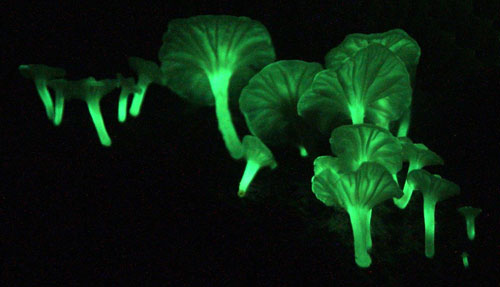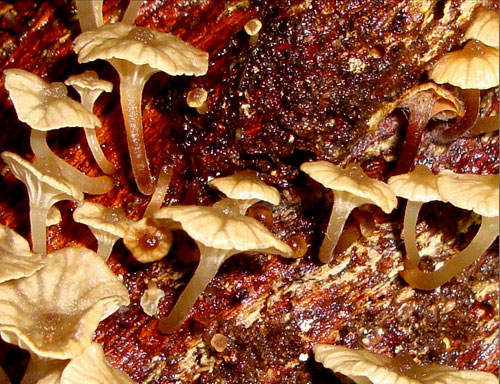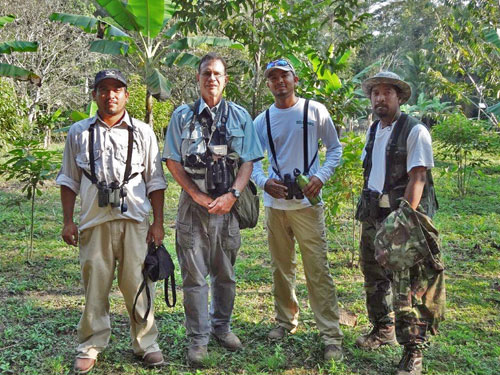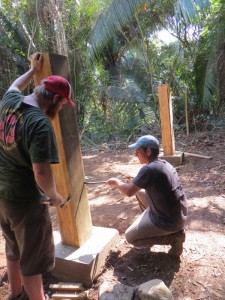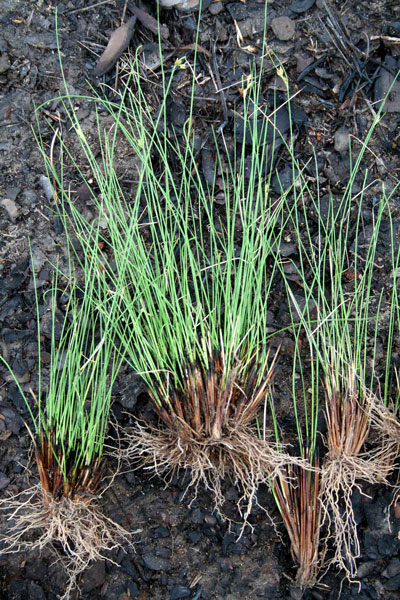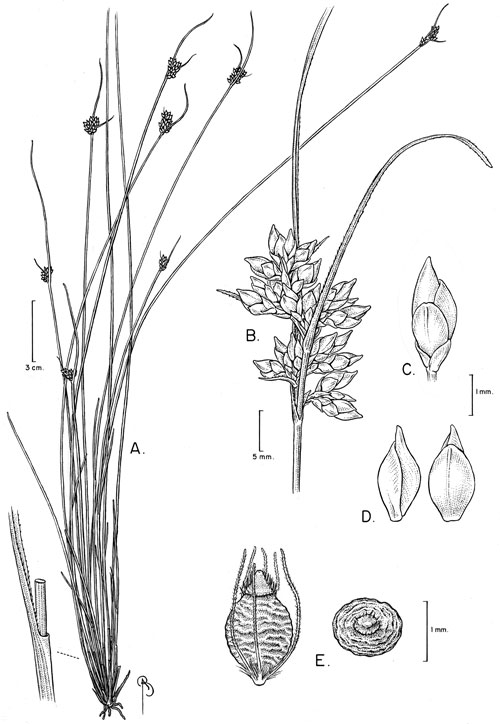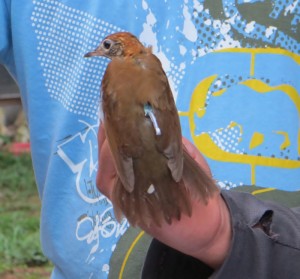Tracking BFREE’s Migratory Songbirds
Connecting Northeastern Forest and Tropical Rainforest
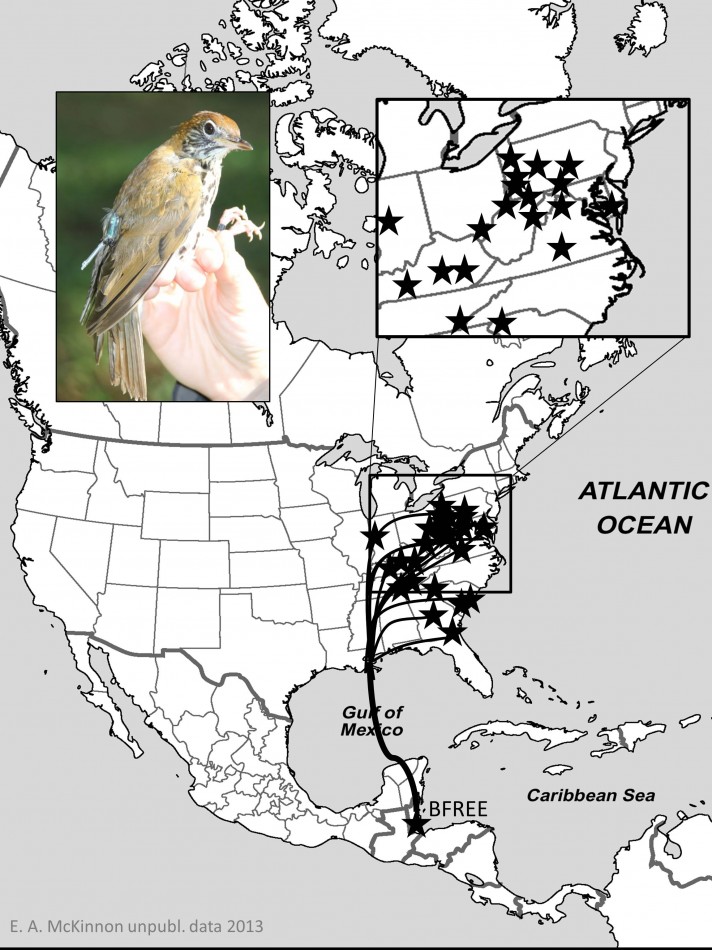 BFREE is home to over 300 bird species; many of these make their summer homes in the USA and Canada. These migratory birds journey thousands of miles, twice annually, between their summer homes in the north (where they buildnests and raise young) and their winter homes at BFREE in the jungle. Amazingly, many of these birds weigh only a few grams – the weight of a dime! Yet they undertake amazing migrations every spring and fall. Scientists have been studying migratory songbirds at their breeding sites and at their wintering sites, but up until very recently we have been unable to directly track the migrations of small birds. We could see them at major ‘stopover’ sites along their migrations, but we had no idea where each individual was going or where they were coming from. This all changed with the miniaturization of a device called a ‘geolocator’. This tiny unit, weighing less than 1g, passively records the locations of small birds each day, allowing scientists to document, for the first time, the migratory behavior of songbirds.
BFREE is home to over 300 bird species; many of these make their summer homes in the USA and Canada. These migratory birds journey thousands of miles, twice annually, between their summer homes in the north (where they buildnests and raise young) and their winter homes at BFREE in the jungle. Amazingly, many of these birds weigh only a few grams – the weight of a dime! Yet they undertake amazing migrations every spring and fall. Scientists have been studying migratory songbirds at their breeding sites and at their wintering sites, but up until very recently we have been unable to directly track the migrations of small birds. We could see them at major ‘stopover’ sites along their migrations, but we had no idea where each individual was going or where they were coming from. This all changed with the miniaturization of a device called a ‘geolocator’. This tiny unit, weighing less than 1g, passively records the locations of small birds each day, allowing scientists to document, for the first time, the migratory behavior of songbirds.

At BFREE, we are studying the ecology and migrations of one of these amazing migratory songbirds, the Wood Thrush. We are catching Wood Thrushes in the jungle around BFREE and giving them small ‘backpacks’ – geolocators – that will record their migration north and back again. The backpacks are very small, and do not affect the birds’ survival. The downside of these small backpacks is that they do not transmit information. We have to recapture the birds in the following year when they return to BFREE in orderto download the migration and breeding site information from the geolocator. However, this is not as impossible as it sounds! Wood Thrushes, like many migratory songbirds, are site-faithful in winter, which means they return to the same patch of jungle each winter. So far we have retrieved 28 geolocator backpacks from Wood Thrushes at BFREE! This gives us amazing insight into their migrations and breeding sites.
For example, we have found out so far that the BFREE Wood Thrushes head to the USA in the summer – breeding in Pennsylvania, Kentucky, Tennessee, Georgia, South Carolina, Indiana, Virginia, and Maryland. These birds can probably be found in mature deciduous forests in these states in the summertime. We have also documented that all the BFREE Wood Thrushes fly directly across the Gulf of Mexico during their spring migration. This is a direct flight of around 600 miles that the birds accomplish in one day!
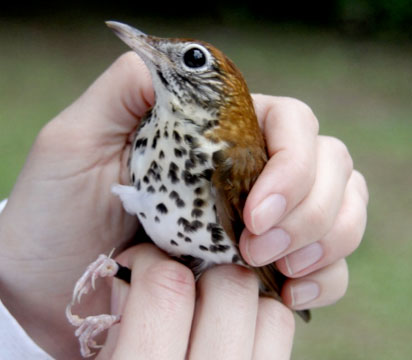
This is the first time migratory birds have been directly tracked between Belize and their North American breeding grounds. Why is this important? According to Breeding Bird Surveys in the US and Canada, populations of migratory birds are declining at an alarming rate. Wood Thrushes in particular have recently been added to the endangered species list in Canada. Their populations have declined by 60% in the last 40 years, across North America. Why are Wood Thrushes, and many other migratory species, disappearing? Scientists trying to figure out the answer to this question struggled because once birds left their breeding or wintering sites, they didn’t know exactly where they went. What areas are important migratory routes for specific breeding populations? Is there a structure linking specific breeding and wintering areas? More specifically, how flexible are migratory birds in their migration timing? Are they getting out-of-sync with their insect food in the north as climate change drives warmer spring in North America? These are all questions that we can now answer with information from tracking Wood Thrushes with geolocators. This year we have deployed over 80 geolocators on Wood Thrushes and we hope that many of these birds will come back to BFREE next winter and help provide information critical to conservation of their species.

